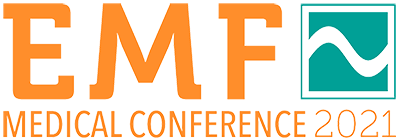
Charles Teo, AM, MBBS, FRACS
Professor Teo was, and remains, instrumental in the development, dissemination and acceptance of the concept of keyhole minimally invasive techniques in neurosurgery. He runs a fellowship program that attracts over 600 applicants yearly and has trained many of the world’s leading figures in neurosurgery at distinguished centres such as the Barrow Neurological Institute and Johns Hopkins, Duke, Stanford, Vanderbilt and Harvard Universities. Dr. Teo has over 120 publications in peer-reviewed journals and has authored two books on keyhole approaches to brain tumours and is a guest editor for several journals. He is the Australian representative on the Tumour Section of the AANS and CNS. Professor Teo strongly believes that a surgeon’s responsibility to his patients shouldn’t end after surgery. In keeping with his desire to find cures for recurrent brain tumours he has raised over $20 million that has been used to fund research scientists both in Australia and abroad. He has done this through the Cure for Life Foundation, the Cure Brain Cancer Foundation (Charity of the Year 2016) and currently the Charlie Teo Foundation. Charlie dedicates 3 months every year to pro bono work in developing countries, for which he has been recognised with awards from Rotary International, including the Paul Harris Fellowship (for contribution to World Health), and as a finalist in the NSW Australian of the Year awards in 2003 and 2009. In the 2011 Australia Day awards he was named as a Member of the Order of Australia (for contribution to the development of minimally invasive neurosurgery).
Abstract
Brain Cancer and EMR … Is There a Link??
This presentation will consider four principal types of evidence that are relevant to determining the etiology of radiofrequency radiation exposure and brain cancer: in vitro studies of human and animal cells; in vivo studies; and epidemiological studies.
In the past three years, the US National Toxicology Program and the Ramazzini Institute have produced a number of publications that provide in vivo studies indicating that cell phone radiation can cause multi-organ DNA damage in both rats and mice. Many studies are documenting cellular oxidative stress, which could be a possible mechanism responsible for genetic damage and tumor genesis, with evidence that the blood brain barrier is temporarily compromised following exposure to cell phone radiation making the brain more vulnerable to exogenous influences.
Epidemiological studies are much more limited and have been marred by inadequate exposure information. However, the sheer number of such studies with various types of ipsilateral tumors in parts of the brain that receive the most radiation from cell phones (temporal and frontal lobe tumors) provides powerful evidence of an association after 10-years of cell phone use that has a higher risk factor for younger users. Some brain tumors are remaining stable, others are decreasing, and some are increasing. Consequently, when all types of brain tumors are lumped together, they provide misinformation about the state of the science. The rate of increase of glioblastoma multiform implies an environmental rather than a genetic basis and cannot be explained by improved diagnostics as tumor size varies.
Today more young people die of brain tumors than any other cancer and brain tumors provide the greatest socio-economic impact on society with costs in the billions. Therefore, given all these data, precautionary measures to limit exposure to cell phone radiation, are advised.
Thursday 28 January 2021
Brain Cancer and EMR … Is There a Link??
CME
